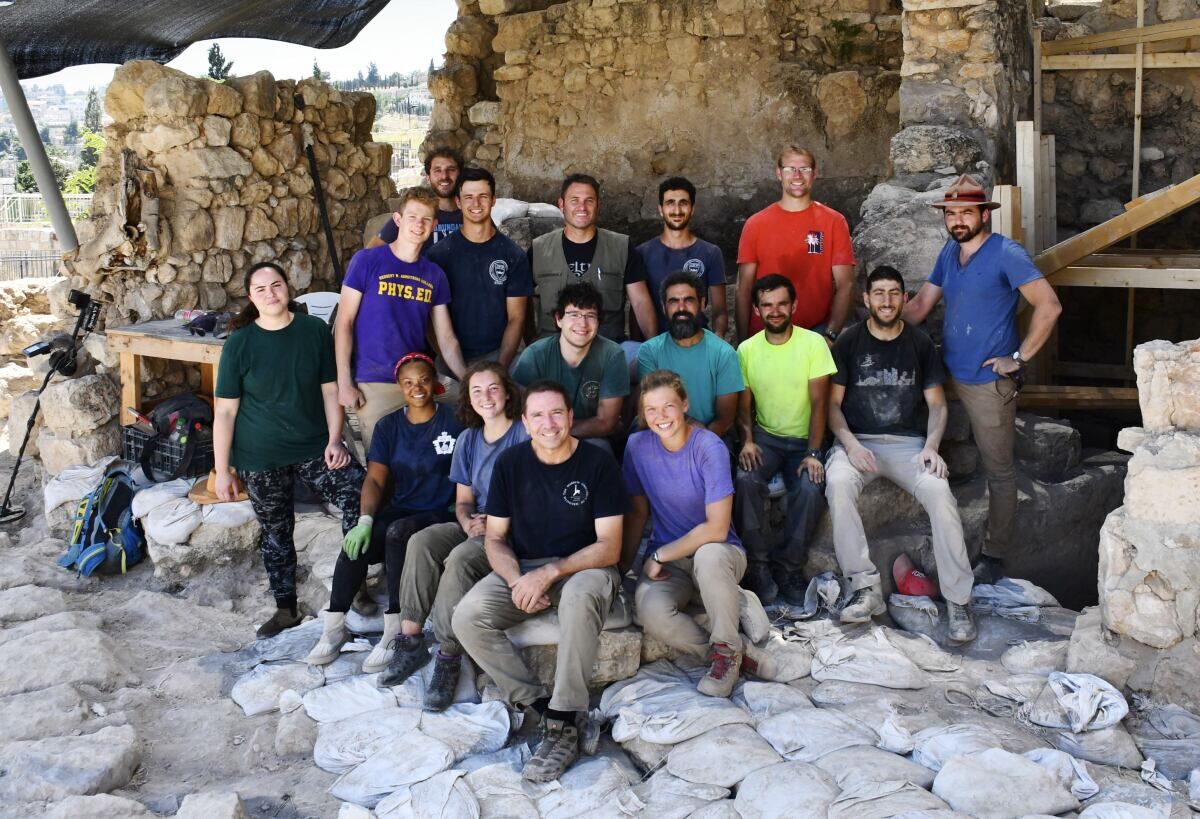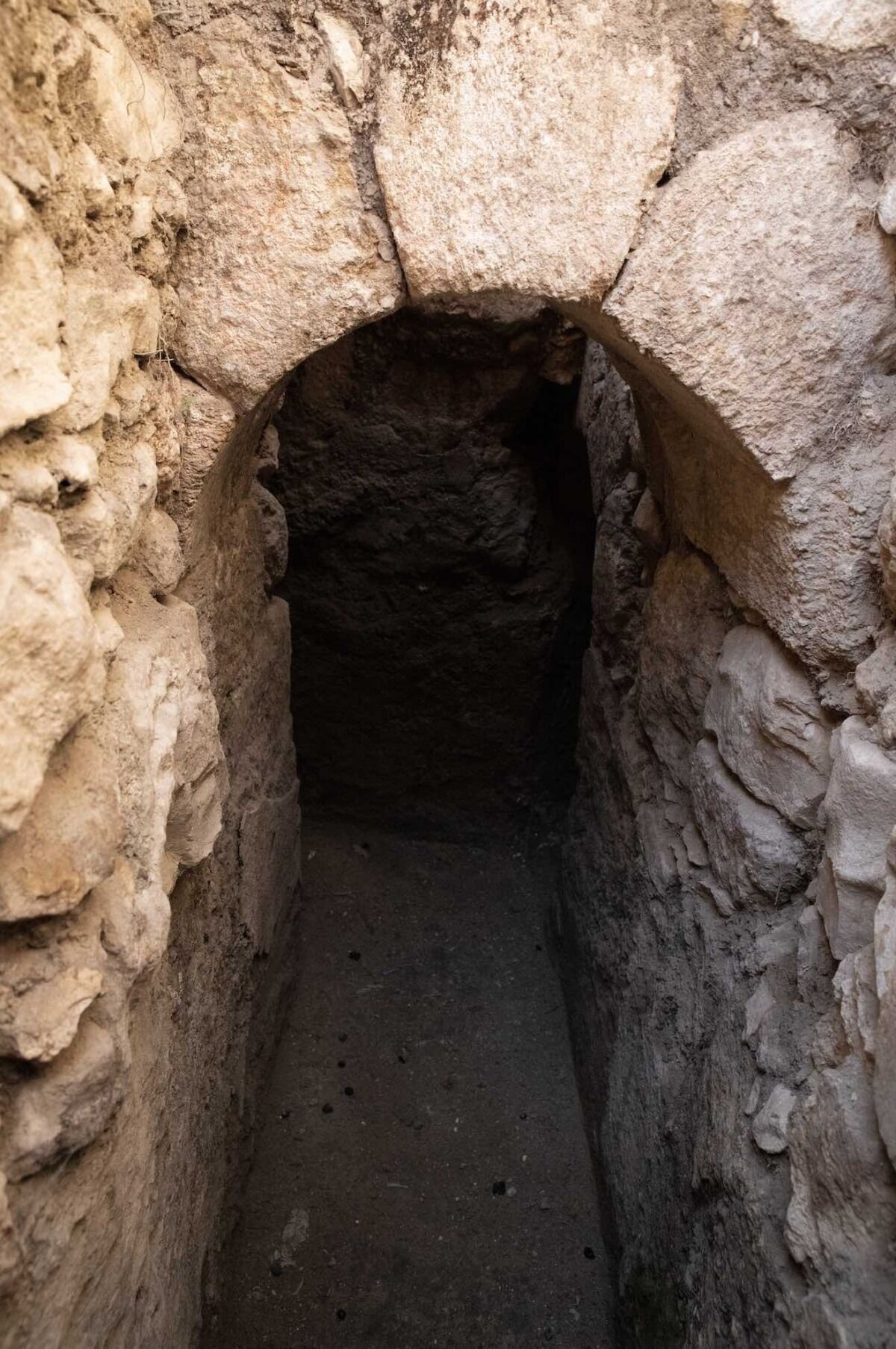Returning to the Ophel: An Interview With Professor Uzi Leibner
During excavations on the Ophel last summer, the team from Hebrew University and the Armstrong Institute of Biblical Archaeology (aiba) continued to uncover a Second Temple Period, 2,000-year-old monumental building at the foot of the southern wall of the Temple Mount. The building was first discovered by Dr. Eilat Mazar in 2018.
In June, aiba and Hebrew University return to the Ophel to continue to reveal this impressive structure. This phase of the dig is larger than the last and will be codirected by Hebrew University archaeologists Prof. Uzi Leibner and Dr. Orit Peleg-Barkat. In this interview, Let the Stones Speak assistant managing editor Brent Nagtegaal speaks with Prof. Uzi Leibner, who is also the head of the Hebrew University’s Institute of Archaeology, about the significance of the excavation this summer. The following interview has been edited for clarity.
Brent Nagtegaal (BN): Thank you for your time. First, could you tell us about the general significance of the Ophel area?
Prof. Uzi Leibner (UL): The Ophel is a public area situated right at the foot of the Temple Mount—between the Temple Mount and the City of David. The main gates to the Temple Mount in the Second Temple Period were situated in the Southern Wall, right above the Ophel. We assume that most of the transit of pilgrims into the Temple Mount would come through this area. It’s full of public structures, infrastructure, streets, staircases and so on, all designed to handle the masses coming up to the Temple Mount.
BN: And we are mainly focused on the Second Temple Period in these excavations?
UL: It’s mainly the Second Temple Period. The area that we are excavating currently is covered with a very dense Byzantine-period neighborhood of a domestic nature, mainly from the fifth and sixth centuries c.e. What we started to do is to dismantle a few points in this neighborhood to reach down to the Second Temple Period. There is a gap of a few hundred years between the Second Temple Period layer, which ends abruptly in 70 c.e., and when settlement resumes in this area somewhere in the late fourth or early fifth century. Our goal is to excavate down to the Second Temple Period.

BN: This is your second season digging the Ophel. What were some of the key discoveries from your first season [in summer 2022]?
UL: First of all, we should note that we are continuing Dr. Eilat Mazar’s huge project, which she handled for years, and she started excavating here almost a decade ago. In 2018, which was her last season before she passed away, she started uncovering (where we’re working currently) the entrance to a very lavish and elaborate monumental building dated to the late Second Temple Period. We don’t have the exact date yet, but it’s probably dated to somewhere in the late first century b.c.e. or the early first century c.e. The building is located right at the bottom of the staircase leading up to the eastern Hulda Gate, which was one of the main entrances to the temple.
Last season, we started to excavate inside and underneath this well-preserved, beautiful structure. We don’t yet have a clear sense of what is the function of this building. Two of the rooms have staircases descending inwards.
Our main conclusion last season was that in this area, the Second Temple Period layer, ended in a dramatic destruction in the year 70. One of the major finds last summer was numerous coins of the Jewish Revolt against Rome from the year 66 c.e. to 70 c.e. We have dozens of these coins, including a very rare silver half-shekel of the revolt. So it seems that this whole area was destroyed in the year 70 and then was abandoned for a few centuries, then resettled with mainly domestic dwellings.
https://www.youtube.com/watch?v=HuQnMyi-nBw
Our main mission for this season in this area is to dismantle a Byzantine domestic structure that was built on top of this lavish Second Temple Period building, allowing us to get a better sense of the plan and function of this early structure.
BN: How rare is it in this area of the eastern part of the Ophel to find this 70 c.e. destruction sitting on top of a such a monumental building?
UL: It’s very rare in this area of the Ophel to find a well-preserved Second Temple Period structure still standing to a significant height. The whole eastern part of the Ophel area was first uncovered in the major excavations of Prof. Benjamin Mazar 50 years ago, yet they did not descend down to the Second Temple Period here.

BN: So they didn’t dig down deep enough in this area?
UL: Exactly. This means there is huge potential in this area to find similar discoveries that Mazar found on the southwest corner of the Temple Mount, where they found streets, staircases, reservoirs and shops. But we are really still at the beginning of this project.
BN: What are we focusing on in the dig this summer?
UL: We are going to be on a much larger scale this year compared to last season. We have a combination of the Armstrong College students coming from abroad, Hebrew University students and volunteers coming as well. We hope to have around 25 to 30 people on site on a daily basis.
This season we will have a new codirector, Dr. Orit Peleg-Barkat of Hebrew University. Orit is an expert on Second Temple Period Jerusalem. Together, we will focus on this monumental building (Area D and its sub-surface area, Area D1). What we learned last season is that underneath this monumental building is a very sophisticated and complex subterranean world of tunnels and reservoirs. They mostly seem to be meant for water storage or channeling. We don’t yet have a clear sense of where the water came from or where it went. We hope this season to continue excavating these underground tunnels to get a better understanding of their use.
We are also going to open two additional areas: one big area (Area E) and one smaller area.
Area E, the new big area, is by the southeastern corner of the southern wall of the Temple Mount. This means we’ll be climbing up one terrace, getting closer to the Temple Mount. This area is also populated by Byzantine structures. However, we can already see a few walls below that, based on their orientation, seem to be Second Temple Period.

BN: We think there might be a building in Area E that is from the same period as the monumental building in Area D?
UL: Exactly. We have great expectations for this new area. Again, it’s right opposite the corner of the eastern corner of the Temple Mount. The western corner of the Temple Mount was very rich with finds from the late Second Temple Period, so we hope that maybe something similar will come up also in this area.
In the other new area for this season—the area right beneath the edge of the Hulda stairs—we are not planning to uncover or expose a building. Rather, we plan to do some sections to gain information on a building Benjamin Mazar uncovered. This was published as a monastery called the Monastery of the Virgins. When Eilat Mazar published the excavations, she said Benjamin Mazar wrote in his diaries that while the monastery was probably built in the fifth century, in it are incorporated segments of ashlar walls dated back to the Second Temple Period. These likely belonged to an important structure that stood right at the gate of the Temple Mount.
Benjamin Mazar found here a fragment of an Aramaic inscription, apparently mentioning “the elders,” whereby he suggested that maybe there was some sort of a court situated at the entrance of the temple gate. This is something mentioned in rabbinic literature of later periods. Unfortunately, he did not leave any evidence for the dating of these segments of the walls back to the Second Temple Period. So we plan to excavate a few small sections to the foundations of these walls to check if, indeed, they should be dated to the Second Temple Period. Then we will try to figure out what can be said about what stood here in the first century c.e.
One of our main goals with these projects as a whole is to try to understand how this whole area was designed in order to accommodate the masses of people arriving three times a year. The sources talk about tens of thousands of people, even millions coming, which is probably exaggerated. But we can definitely talk about thousands and thousands of people visiting this area three times a year. We want to know how this area was organized in order to handle this massive traffic, in terms of infrastructure, ritual baths, supplying water to all these pilgrims, shops, money changers, etc—whatever we can say about the organization of the pilgrimage to the temple in the late Second Temple Period.
BN: This season starts in June. Is there room for more volunteers?
UL: Unfortunately, it’s too late for people to sign up. We are already fully booked up. This is going to be a very long season. We’re planning seven weeks of excavations starting June 18. We’ll start with two weeks of mainly dismantling modern and Byzantine walls before we reach the floors. Then five weeks of excavation going till the beginning of August.
BN: Can’t wait! Thanks very much for giving us this preview.
UL: My pleasure.
https://www.youtube.com/watch?v=P9N6O8gjiFw